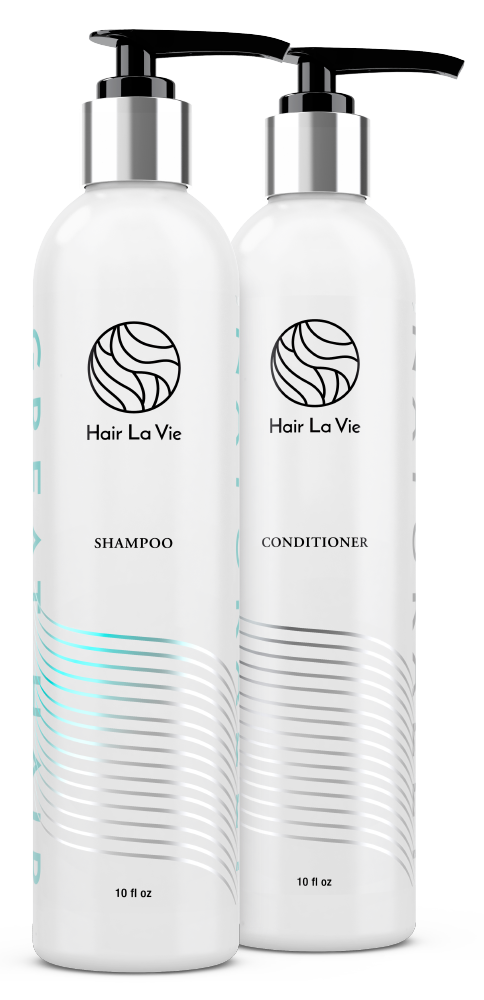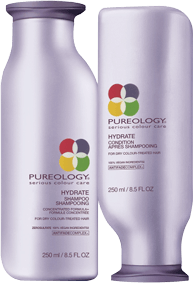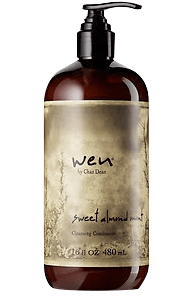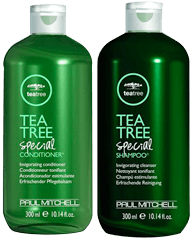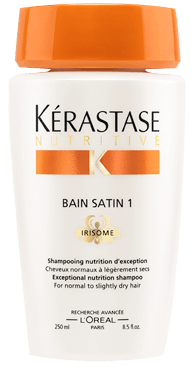What's Your hair type?
Click your hair type to reveal more specific tips and tricks for washing.
-
Type 1: Straight Hair
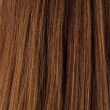
Common Characteristics
- Straight hair that typically thins out later in life
- Exceptionally resilient (difficult to style/curl)
- When healthy, has a beautiful natural shine
- Tends to get oily faster than any other type
Natural Needs
- For thinner/thinning hair it’s important to strengthen, avoid buildup and add body.
- For thicker hair it’s imperative to hydrate the ends of your hair with natural oils.
What To Look For In A Shampoo
Look for a sulfate-free, low-poo cleanser. Low-poo has stronger cleansers than no-poo, but won’t be so harsh it will strip your hair.
Ingredients
- Horsetail herb/willow bark for helps with excess oil/volume
- Cocamidopropyl Hydroxysultaine for cleansing
What to Look for in a Conditioner
Find a non-greasy (natural oil based) conditioner that will hydrate the ends of your hair without adding buildup/oil.
Ingredients
- Keratin/hydrolyzed soy or wheat protein (for thinning/thin hair) strength/volume
- Peppermint oil this light oil adds moisture and helps stimulate the scalp
- Argan oil is light enough to add moisture without weighing down the hair
-
Type 2: Wavy Hair
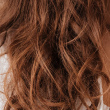
Common Characteristics
- Wavy hair that is often fine with a nice shine
- Temperamental to styling and styling products
- Frizz and split ends are a prime issue
Natural Needs
- For thinner/thinning hair it’s important to avoid buildup, protect your waves and add body.
- For thicker hair it’s imperative to hydrate and protect your waves.
What To Look For In A Shampoo
Look for low-poo cleanser that’s free of fillers like parabens and SLS. Low-poo has stronger cleansers than no-poo, but won’t weigh your hair down.
Ingredients
- Horsetail herb/willow bark to aid in excess oil removal
- Cocamidopropyl Hydroxysultaine for cleansing
What to Look for in a Conditioner
Find a natural conditioner with a lot of added antioxidants and vitamins that will strengthen the hair without weighing down your waves.
Ingredients
- Avocado oil is packed with vitamins which are known to help with frizz
- Argan oil is light enough to add moisture without weighing down your waves
-
Type 3: Curly Hair
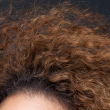
Common Characteristics
- Curly hair is usually full-bodied
- Will get frizzy from overstyling, buildup, lack of moisture and humid climates
- The thicker the hair the dryer it becomes
- Tends to lose moisture easily
Natural Needs
- For thinner/thinning hair it’s important to infuse with vitamins and antioxidants for stronger growth.
- For thicker hair it’s imperative to hydrate the entire surface of your hair with natural oils.
What To Look For In A Shampoo
Look for a low-poo cleansing set with natural oils included in both the shampoo and conditioner. This won’t strip your hair when you wash.
Ingredients
- Cedarwood will gently cleanse your hair without stripping it of its natural oils
- Cocamidopropyl Hydroxysultaine for added cleansing
What to Look for in a Conditioner
Find a non-greasy (natural oil based) conditioner that will hydrate and add body to your hair thoroughly without adding buildup/oil.
Ingredients
- Jojoba oil will coat your hair’s cuticles and seal in moisture
- Peppermint oil helps both hydrate and stimulate the scalp
-
Type 4: Coily Hair
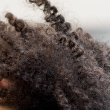
Common Characteristics
- Tightly coiled in an “S” or “Z” shape
- Tends to be extremely dry and brittle
- Has issues with shrinkage and absorption
- Doesn’t have a noticeable reflective shine
Natural Needs
- For thinner/thinning hair it’s important to infuse with vitamins and antioxidants that can aid with stopping breakage.
- For thicker hair it’s imperative to hydrate the entire surface of your hair with natural oils so it doesn’t dry out and break.
What To Look For In A Shampoo
Natural hydration, cleansing and detangling are the main priorities for cleaning type 4 hair. It’s imperative you avoid shampoos with SLS as this can dry the hair even more.
Ingredients
- Coconut oil for nourishment
- Tea tree oil for gentle cleansing
What to Look for in a Conditioner
Hydration and detangling so hand-in-hand. Find a natural conditioner that will hydrate the entire surface of your hair. Consider cleansing systems with an added deep conditioner that can be used occasionally when the hair is overly dry.
Ingredients
- Shea butter for a boost of vitamins. Perfect for weaker hair
- Avocado Oil helps restore dry, brittle hair by depositing monounsaturated fatty acids and antioxidants into your scalp and strands
THE HIDDEN DANGERS OF SHAMPOO AND CONDITIONERS
According to the Journal of the American College of Toxicology, common shampoo and conditioner ingredients such as Sodium Lauryl Sulfate (SLS) and Sodium Laureth Sulfate (SLES) can damage the immune system, cause separation of skin layers, and inflame your skin leaving it dry, rashy, and irritated.
SLS is found in about 90% of hair care products, but is also found in several harsh floor cleaners, engine degreasers, and car wash detergents—not exactly something you would want to put in your hair.
The sad truth is that most manufacturers cut corners and use cheap synthetic ingredients when formulating their products. It saves them money and most consumers can't tell the difference.
You may wonder why your hair is unhealthy, but you'd never think to blame your good ol' shampoo and conditioner.
In fact, we tend to forget how important choosing the right shampoo and conditioner is. We usually stick to lower-priced products and do little to no research on their ingredients. Many brands take advantage of this by including cheap fillers to cut production costs, then paying individuals to write positive reviews on Amazon.
This is one of the most harmful things you can do to your hair. Shampoos and conditioners are the foundation of our haircare routine, and they can have a profound effect on both texture and health. That's why it's critical to find products with the highest-quality ingredients that have been clinically tested, even if it means doing extra research and paying a little bit more.
The Proof is in the Pudding -- WE mean in the Shampoo and Conditioner
You are what you eat, right? Consuming processed and unnatural foods can make you feel sluggish and lead to numerous health issues. The same goes for your hair. Your hair and scalp act like a sponge and absorb the nutrients that you feed it.
You want to find the right mix of essential oils, vitamins, natural extracts, and mild cleansers to gently clean your hair and scalp, while fortifying it with beneficial natural ingredients.
Below are beneficial and natural ingredients a high-quality shampoo should contain. All ingredients have been studied in clinical research to help maintain healthy hair.
Beneficial and Natural Shampoo Ingredients:
Essential Oils
- Peppermint Oil - Aids in the moisturizing process, promoting existing hair growth.* 3
- Cedarwood Oil - Promotes existing hair growth.* 4
- Tea Tree Oil - Cleanses your hair and scalp by removing dead cells and unblocking hair follicles.* 5
- Jojoba Seed Oil - Similar to the natural oil your scalp produces - sebum, Jojoba is used to moisturize the scalp.* 6
- Grapefruit Oil - Hydrates the scalp, helping to clear away dead skin and make the skin feel comfortable.* 7
Fortifying Extracts
- Horsetail (plant) - Assists in nourishing and helping hair follicles feel stronger. It also aids in removing styling product buildup.* 8
- Nettle - Promotes healthy/beautiful hair.*.9
- Willow bark - Helps maintain existing hair growth*
Proteins
- Keratin - Promotes hair health by protecting hair cells from styling products and heating tools.* 10, 11
- Soy and Wheat Proteins - Penetrates the cortexes of hair strands, to help them feel and look stronger, while also moisturizing them.* 11
Vitamins
- B5, D3, and E - Helps maintain hair growth, and hydrates the scalp.*
Natural Foaming Agents
- Cocamidopropyl Hydroxysultaine - Derived from the fatty acids in coconut oil, it acts as a foaming and anti-static agent, which conditions and helps thicken the appearance of your hair.*
It is important to know which ingredients are good for your hair. But it is equally important to know which ingredients to avoid. Many people don't understand why their hair is damaged. If you are experiencing an itchy or dry scalp and have noticed hair loss or thinning, you might want to look at what is inside your shampoo and conditioner.
Listed below are harmful shampoo ingredients you need to look out for:
Harmful Shampoo Ingredients:
-
Harsh Sulfates
SLS and SLES are chemicals reported by the American Journal of Contact Dermatitis to cause irritation. They are added to shampoos because of their cheap and effective bubbling properties. -
Parabens
Chemicals including methylparaben, ethylparaben, and propylparaben can be absorbed through your skin and have been linked to breast cancer.12 -
Cocamide DEA
Found in many products claiming to be natural, the basis of this chemical—coconut oil—seems innocent enough. But scientists tinkered with the ingredient, modifying it into an unnatural, toxic form, and in 2012 California added it to its known carcinogens list.13
Now that we've taken a look at the ingredients we need in our shampoo (and the harmful ingredients we need to avoid!) let's take a look at conditioner.
Conditioner is used to moisturize and protect your hair. Because of conditioner's protective properties, you want to make sure there are plenty of naturally occurring proteins and amino acids to nourish and promote healthy hair.
Listed below are beneficial and natural ingredients your conditioner should contain. Just as importantly, make sure you read the list of harmful ingredients you must avoid.
Beneficial and Natural Conditioner Ingredients:
Hydrolyzed Proteins
- Keratin - The strongest hair protein which everyone's hair is made from, this protein helps keep hair looking and feeling strong, reduces frizz, smoothes, and makes your hair shine.*.14
- Hydrolyzed Soy Protein - Strengthens the look and feel of your hair, helps increase your hair's moisture and adds shine.*.15
- Hydrolyzed Wheat Protein - Fortifies and moisturizes your hair by penetrating each hair cortex*.15
Essential Oils (Conditioning)
- Marula Oil - Seals, coats, and smoothes your hair cuticle*.16
- Argan Oil - This high omega oil coats, protects, and moisturizes your hair*.17
- Coconut Oil - Helps makes your hair look and feel stronger, more flexible, and promotes existing hair growth and maintenance.* 18
- Avocado Oil - Coats and helps hair feel and look stronger, leaving your hair feeling thick and shiny* 18
Amino Acids
- Silk Amino Acids - Helps nourish hair without weighing it down or causing buildup. They also contain high levels of serine which has excellent moisture preservation characteristics*
Detangling Agents
- Behentrimonium Methosulfate - Mild and recommended for use on baby products, derived from rapeseed oil, best used for detangling.*
Harmful Conditioner Ingredients:
-
Behentrimonium Chloride
Also known as Docosyltrimethylammonium chloride, this cheap, harsh chemical can cause skin and eye irritation.19 -
Isopropyl alcohol
Used in antifreeze, wood finish, and shellac, this strips hair of its natural oils and can cause damage. Avoid this ingredient. -
Silicones
While you usually can't avoid them in your styling products, they shouldn't be present when conditioning your hair. They create the illusion of healthy hair, when in actuality they clog your pores and dry your hair from the inside out.20
Take Care of Your Hair! Be Aware of Sulfates, Parabens, and Silicones
Sulfates, parabens, and silicones are harmful! Studies have linked them to cancer, hair loss, and scalp irritations.21
The harsh reality is that they are commonly used in your shampoo and conditioner.
Take a look for yourself—if SLS and SLES are not listed as some of the first ingredients in your shampoo then you're on the right track.
In Summary
The best way to take care of your hair is with a natural shampoo and a natural conditioner. Here are some tips from our Smarter Shoppers on what to find:
- Look for mild cleansers, essential oils, vitamins, and extracts - they will gently clean your hair and scalp, while fortifying it with beneficial natural ingredients*.
- Look for Essential Oils from Coconut, Avocado, Argan, and Marula - they will give your hair shine and moisture without the oily buildup*.
- Look for Vitamin B, D, and E - they will nourish your hair follicles and help retain your hair's natural properties*.
- Avoid harsh sulfates, parabens, and silicones - these ingredients may work for the very short term, but they do more harm in the long run and can seriously damage your hair and can even cause premature hair loss*.
TOP 5 Shampoos and Conditioners for 2018
Based on our own extensive research, the metrics provided by our Smarter Reviews Ranking System, and consideration of numerous reviews by Smarter Shoppers just like you, we've compiled a list of what we've found to be the top five products in
this category, on the market today.


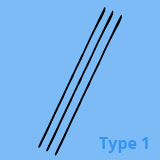
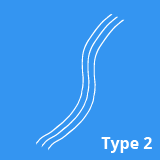
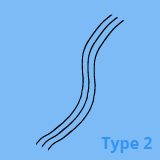
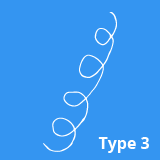
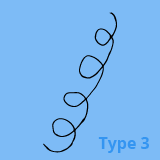
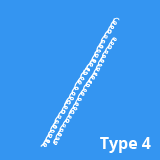
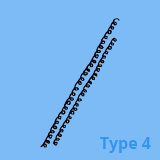
.png)
